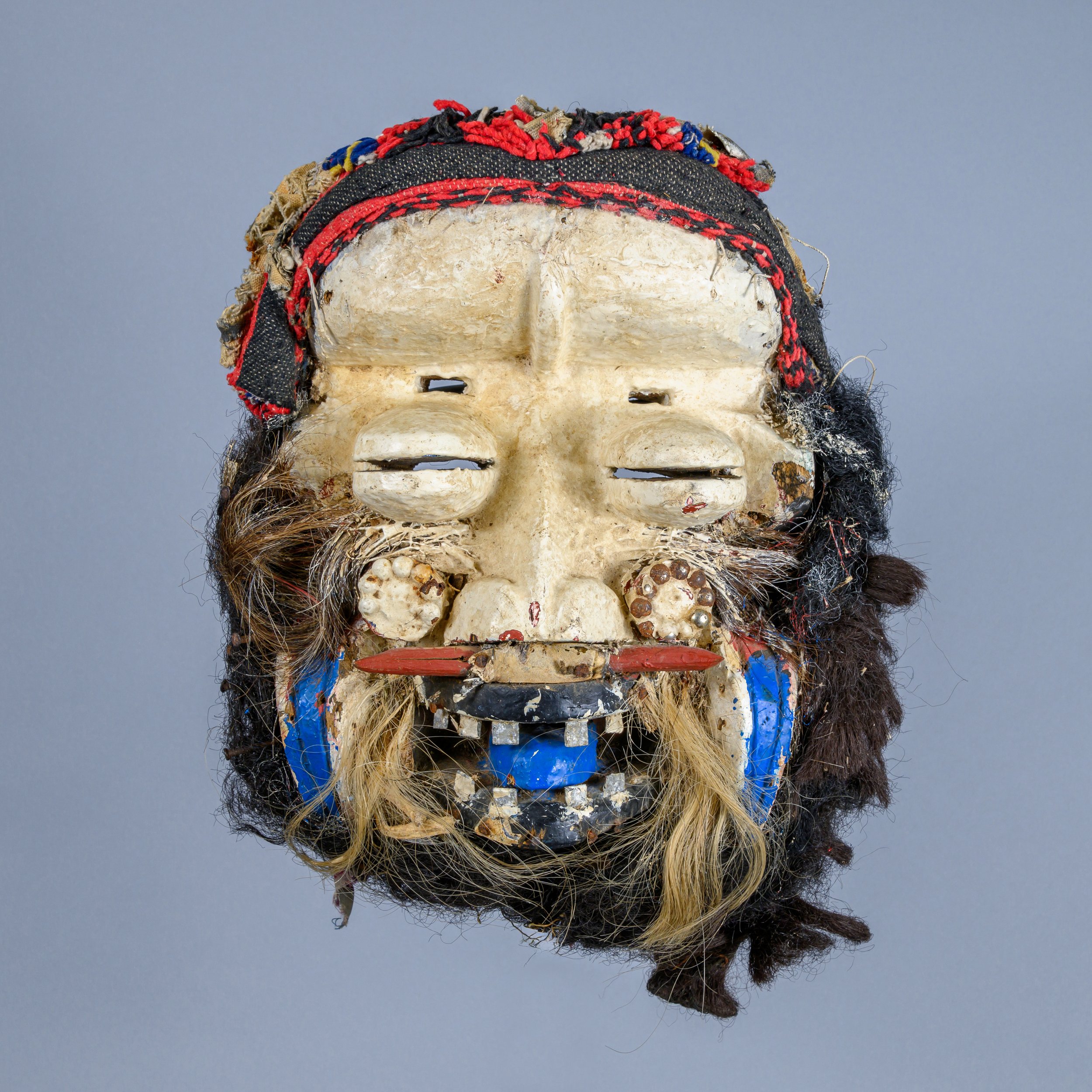

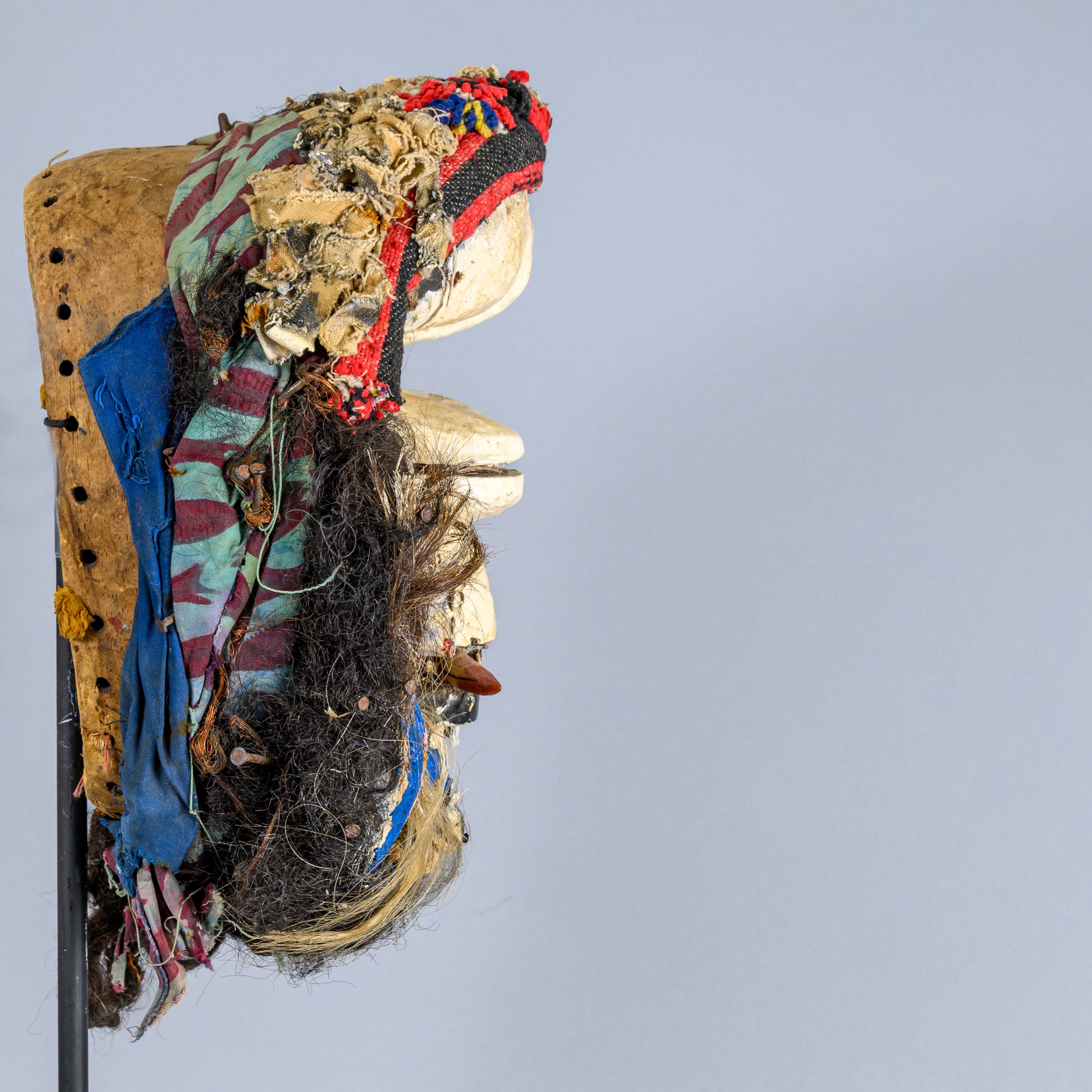
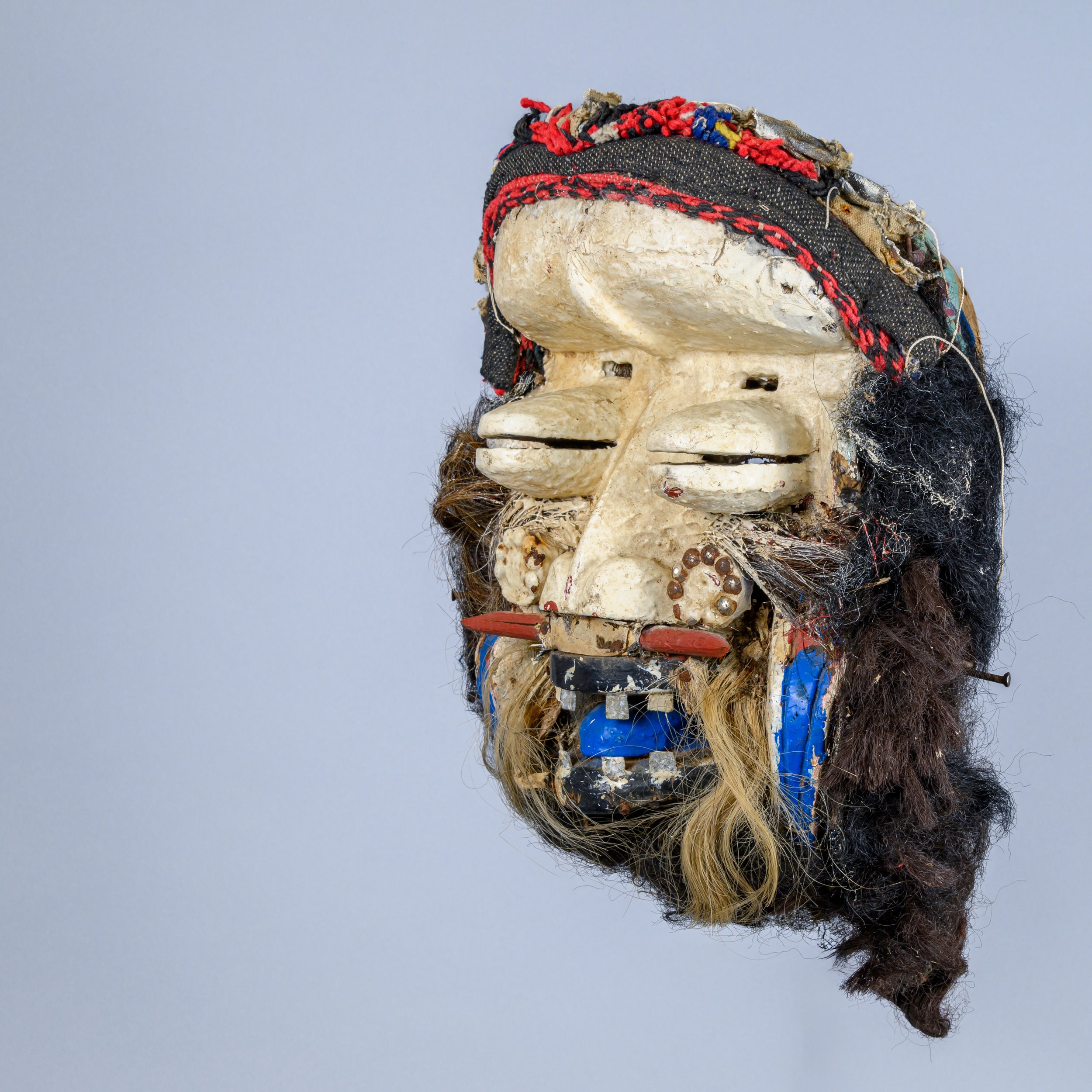

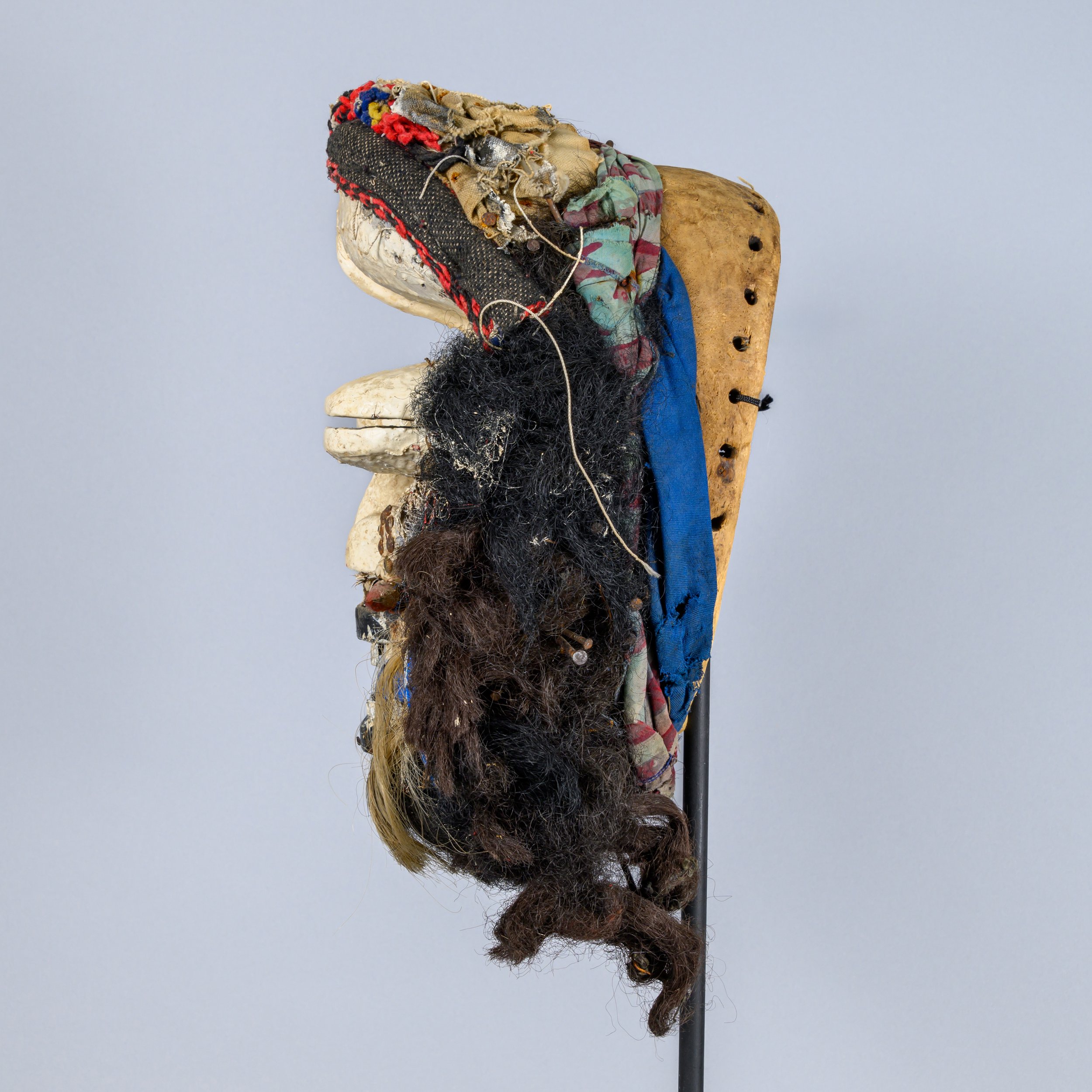
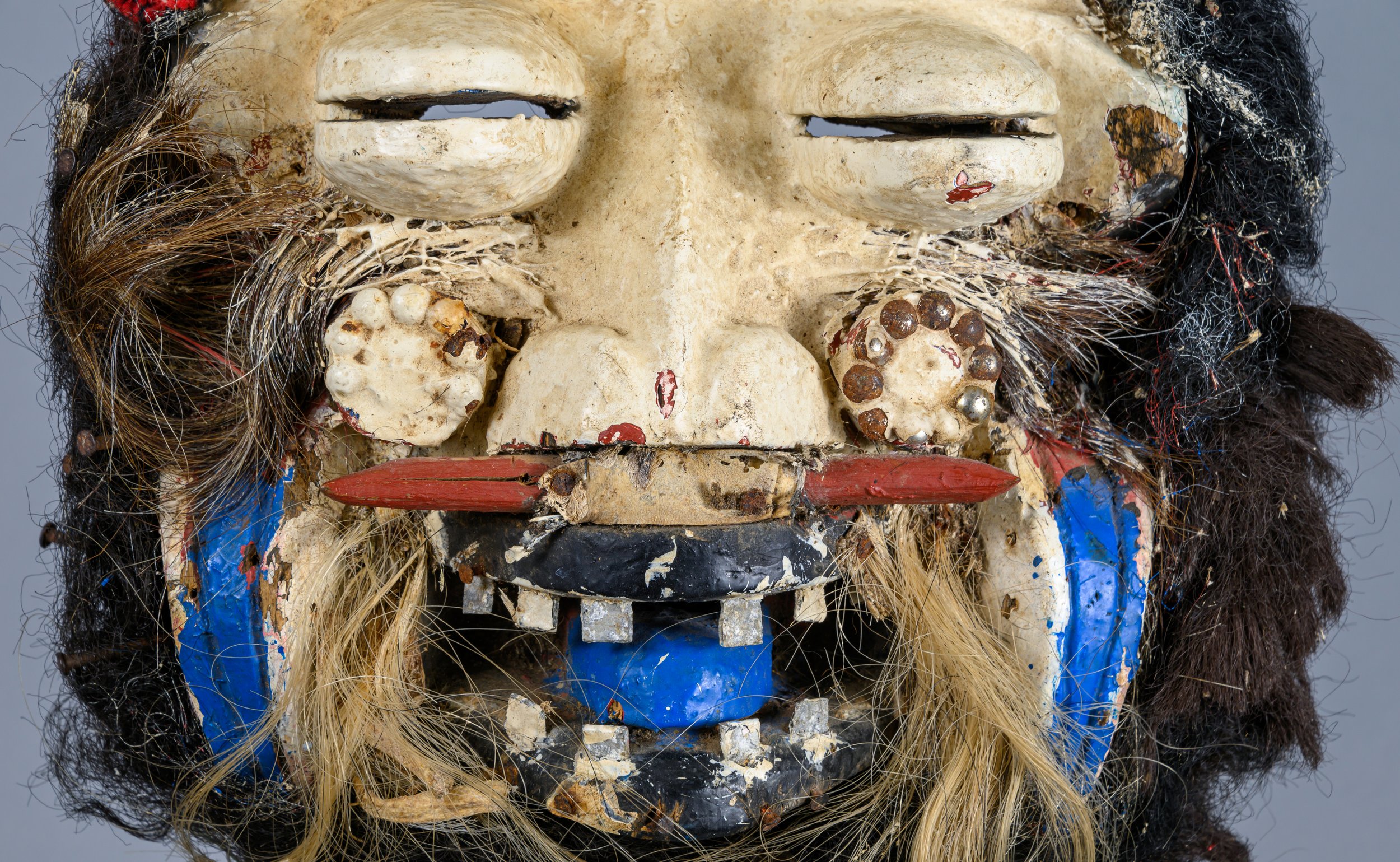

Wè-Guéré, Dihi/Dehe Gla (Dancer-Entertainer Mask)
14in tall / 12in wide (35.6cm by 30.5cm)
wood, cloth, metal, animal hair, hair, metal tacks, remains of animal hide, polychrome
most likely 60s-70s
collection of Chris Doane, CO
The masking society amongst the Wè is called Gla. The Wè explain the arrival of Gla in their villages as the result of an encounter between a founding lineage ancestor and a spirit of the bush, the untamed forest that is both spiritually charged and chaotic. Wè masks take a variety of forms, each well established with readily identifiable attributes, rankings, and functions. They range from hierarchically minor masks representing beggars, comedians, singers, and dancers to masks that are in charge of maintaining order to the singular great mask of wisdom, the mask judge.
In Gla, when a mask is shown publicly, all of the members of the lineage are present and other masks are often invited to participate. The musicians, singers, and dancers that surround the masks also draw crowds of inhabitants from the surrounding areas, who are happy to be a part of the festive atmosphere. This creates occasion for interactions that are beneficial to the community in various ways. Numerous gifts are offered to the mask, which profit the members of its lineage substantially. Moreover, the mask itself has great social importance, independent of its ritual functions in its society. In addition to the ritual aspects of such a performance, each mask wearer, though publicly anonymous, strives to be recognized best dancer of the region, thus earning great prestige for his lineage group as well as invitations to participate in other village ceremonies.
Dealers and collectors often tend to try to put masks in specific categories or types, and sometimes that is easy. This particular mask I believe falls into the category of dihi gla, or dancer-entertainer mask, but that could be incorrect as it is often hard to tell the function of some masks without their accompanying headdress or costume. Masks can also evolve to become different varieties by being painted and having things added to them. There is also the chance that this mask could be a variation of a beggar mask, widely known among the Wè as zro gla.
“For the Wè people, form never really dictates the category of a work. There is no mandatory, compelling connection or absolute relation between the structure, form or shape, color, decoration and use of the mask. The We carry this flexibility to the extreme. Deprived of its attachments and costume the object loses its identity. Even elderly men, when presented with photos of masks on their stand in a show window, photos taken from books or sales catalogues, masks without headdresses, without accoutrements or feathers, without dresses and hats, without scepters or branches and leaves in the hands of the dancer, masks that have been collected in nearby villages but are now in museums, in private collections, hesitate, make faces, shrug, pass the photos around pursing their lips sceptically to confess in the end their inability to clearly connect the object with a specific role or give its exact name. When pushed, they consult among themselves, emit diverging opinions; hypotheses flow; they contradict each other; the controversy heats up; some stalk out of the meeting. In the end, no-one, among some twenty villagers, is in agreement: it is impossible to settle on a function, a ceremony or a name.” - from ‘Visions of Africa - Wè’ by Alain-Michael Boyer.
Inquire below $675 plus shipping
*The mask is not sold with the display stand shown in the photos. It doesn’t work to display the mask properly and was only used for taking photos.
Click/Tap on any image below to bring up the image viewer.
INQUIRE
If you have questions, requests for high resolution photos, or would like to inquire about purchasing this object please use this form.

